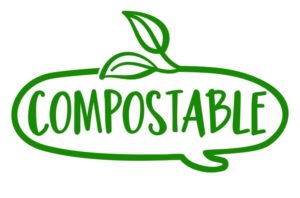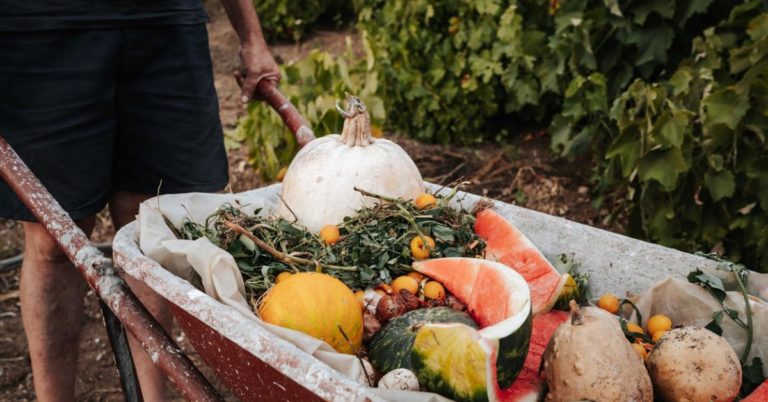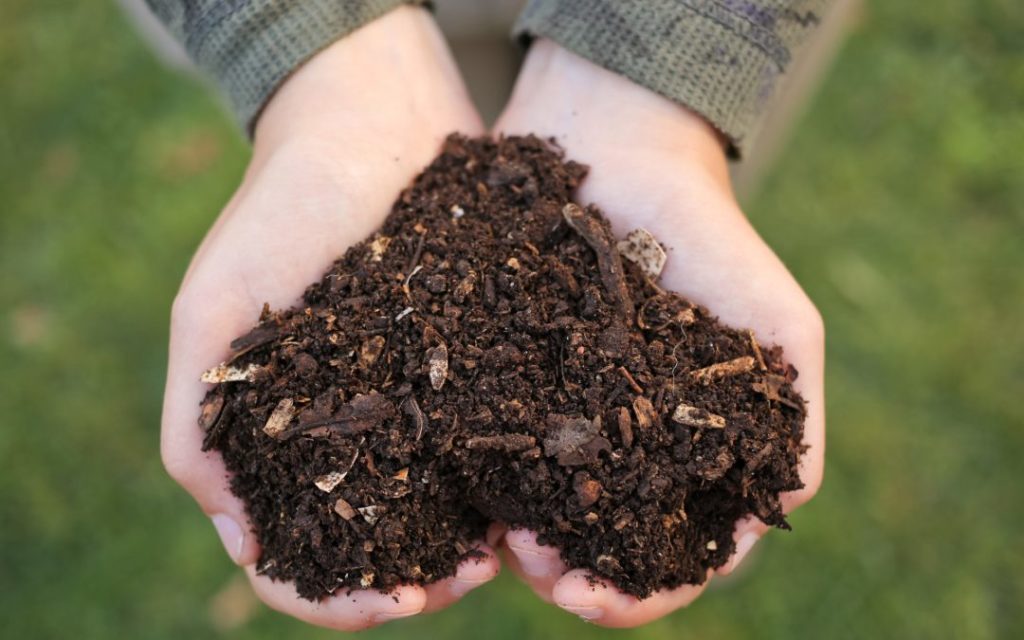Compostable, biodegradable and bioplastics. All these green terms are becoming so integrated into our lifestyle and are often used interchangeably, but do we actually know what they mean? More importantly, are these products a good plastic alternative and as environmentally friendly as they say? Or are we being greenwashed? This area is truly a minefield of information so let’s take a look and see if we can make some sense of it all.

The term compostable literally means capable of being used as compost. Compostable items are organic matter that break down into a material called ‘hummus’ which is full of nutrients and beneficial to the environment as it can be used as fertiliser and improves soil health. Household food waste and yard scraps can generally be composted at home, something we should all be doing as these everyday items make up more than 30 percent of what we throw away, and could be composted instead. However, organic material from commercial sources, such as restaurants, supermarkets and food manufacturers often needs to be managed differently and this is what can cause a lot of confusion over compostable products. These types of products can only compost in certain conditions that can be provided at industrial composting facilities. Even if you see the compostable sign on the product you need to check whether it is home compostable or industrial compostable, more often than not if it’s not food or yard waste then it’s industrial compostable and needs to be sent to a specialist facility- if your area has one. If not then I’m afraid it just ends up at the landfill.
It might seem like a good idea to put these items in the recycling to save them from going to landfill but in fact they cannot be recycled and will actually contaminate the recycling causing the whole bale to be sent to landfill anyway. This is why it’s so important to know how to compost these products correctly.
An additional barrier when it comes to packaging are the labels themselves, since green packaging is very attractive to consumers there has been an increase of false or misleading environmental ads or claims, also known as greenwashing. Even though false advertising is regulated by the Competition Bureau of Canada it’s still a big problem in the industry and this goes for all green labels not just compostables. It’s important to be aware that even if something is labelled as “environmentally friendly”, it might not be the case at all.


There are so many benefits to composting; there have been studies suggesting that the heat produced during the composting process can be reused as a renewable source of energy. Composting also contributes to a circular economy and reduces the amounts of waste at landfills which therefore reduces methane emissions.


Let’s strip this word right back; first of all the term degradable means ‘capable of being decomposed chemically or biologically’. Technically everything is degradable, even plastic for example. Sometimes chemicals are added to help plastic degrade faster but, chemically induced or not, it breaks down into smaller and smaller microplastics whilst releasing harmful chemicals into the environment. AKA pollution which, as we’ll see in the next example, is not classed as biodegradable. Biodegradable products break down or decay naturally without any special scientific treatment, and can therefore be thrown away without causing pollution. Biodegradable products often break down into water, carbon dioxide and organic material. The reason that the terms biodegradable and compostable are used interchangeably is because technically all compostable items are biodegradable. Both terms refer to essentially the same natural process, however it’s the organic matter produced by compostables that can be put to good use.
Although biodegradables sound like a guilt free way of buying plastics, issues start to arise when we come to dispose of our items. More often than not biodegradables go in your general household waste bin and end up at the landfill where they will break down naturally. However, similar to compostable items, biodegradables release gas when they break down. Often in landfills there is little oxygen and so methane will be released, a hugely detrimental greenhouse gas. Another issue is that some biodegradable items may not be 100% biodegradable, often only being made from a small amount of biodegradable material but still marketed as biodegradable. These items will not break down 100% organically, for example biodegradable plastic bottles that aren’t made of 100% biodegradable materials will still release microplastics into the environment. This is especially concerning since plastics sold as being biodegradable are more likely to be littered than other types of plastic. Unfortunately these products cannot be recycled, like compostables, since they are designed to break down. With this being said, due to the growth industry and the rise of bioplastics, biodegradables may soon be able to be recycled.


Bioplastic is a plastic that is made from organic matter rather than oil. On the current trajectory researchers estimate that a fifth of the world’s oil will be used to make plastic by 2050. In addition to the oil industry having a detrimental effect on the environment, it is estimated that the world only has about 47 years of oil left. Bio-based plastics present a greener alternative. Bioplastics are biobased, biodegradable or both. Biobased products are derived from plants and other renewable agricultural, marine, and forestry materials. A common misconception is that biobased means biodegradable, this is not the case. For example in the US a product only needs to contain a minimum of 25% carbon from biological sources in order to be labelled ‘biobased’. Even though the majority of the product is made from fossil fuels it can still legally be classed as a bio product; which is shocking and clearly not biodegradable as 75% of the product cannot break down without causing pollution! Unfortunately the situation is slightly worse in Canada as there are no equivalent regulations. We need to be really careful when we look at these products and not get distracted by misleading labels. This can cause a real problem when it comes to waste disposal, as it is not always clearly displayed on the product as to how it can be disposed of. For example some plant made bottles produce an acceptable compost material under industrial composting conditions whereas others may be biodegradable and will go to landfill or the appropriate facility in your area. Simply stating that something is a bioplastic can be unclear as it doesn’t tell us how to dispose of our items properly, leading to increased waste at landfills and potentially contaminated batches of recycling.
There is however a subset of biobased products that are compostable, and this is the area that might bring about the biggest change. At the minute if we want to recycle something it has to be cleaned first. This often doesn’t happen especially if you are eating on the go; I don’t know about you but I haven’t seen any washing facilities in town where I can give my coffee cup a rinse before I put it in the recycling bin. Creating fully compostable plastic containers could be a game changer for the food service industry, which is one of the main contributors to plastic pollution. This would mean that food left on the packaging can be composted along with the packaging itself. This prevents food contamination in recycling, and reduces the amount of waste being sent to landfill, therefore reducing methane emissions and contributing to a circular economy because food waste and packaging return to the soil as compost. Plus, let’s be honest, the fewer steps we have to take as a consumer means we are more likely to adhere to the process.
There is currently a lot of money being invested in bioplastics and it’s estimated bioplastics will be a $324 billion-dollar enterprise in just over a decade so watch this space.


100% biobased and compostables seem to be the front runners here, they are made from organic materials and they break down back into these organic materials having minimal impact on the environment if disposed of correctly. There is currently so much innovation in this area, for example a research team at the University of Maryland developed a plastic alternative made 100% of wood, or more specifically wood powder that is actually considered a waste product and usually discarded. In the UK, maize based packaging is being introduced in supermarkets which is designed to break down in a home compost bin.
Even though biodegradables generally end up at the landfill, if they are truly biodegradable they are still a better alternative to plastic as they don’t break down into smaller microplastics. As consumers we need to be aware of greenwashing and make sure that we are buying truly green products. The products we buy should reflect the facilities we have available to us in our local area otherwise we are just contributing to the problem. All of these green innovations are trivial if we don’t have the proper means to dispose of them.
